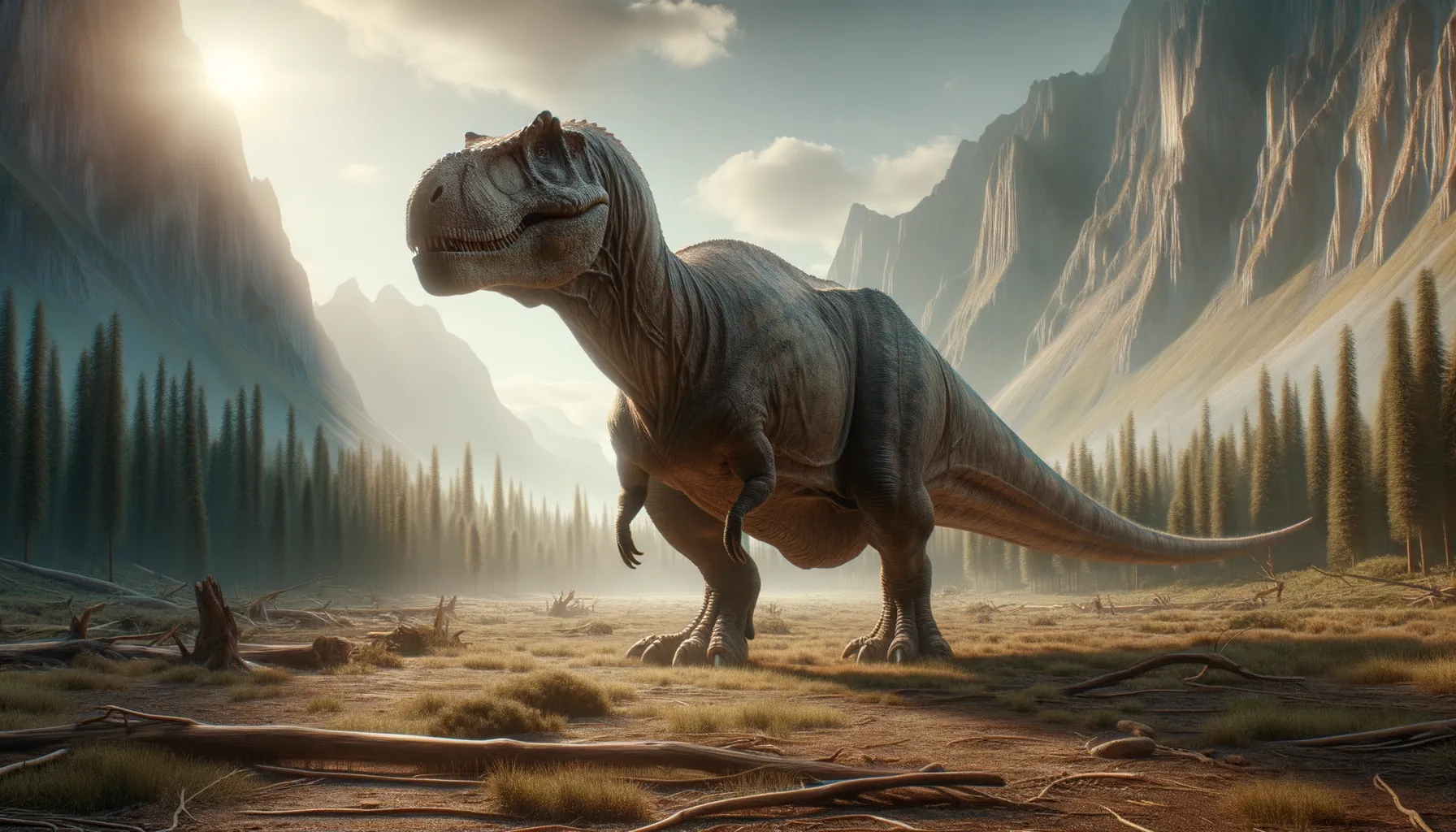
Kagasaurus
A mighty giant of the Cretaceous landscape.
Period
Cretaceous
Length
It measured approximately 9 meters in length.
Height
It stood about 3 meters tall.
Weight
It weighed around 1,200 kilograms.
Kagasaurus was a formidable dinosaur that roamed the Earth during the Cretaceous period. Known for its robust build and impressive size, it thrived in diverse habitats, adapting well to environmental changes. Its fossils provide valuable insights into the prehistoric ecosystems of its time, and it is celebrated for its role in the complex food chains of its era. Researchers continue to study Kagasaurus to understand more about its life and interactions.
Diet
Kagasaurus was an herbivore, mainly feeding on the abundant vegetation available in its environment. Its diet consisted of ferns, cycads, and conifer leaves that thrived in the Cretaceous period.
Hunting
As an herbivore, Kagasaurus did not hunt other animals. Instead, it foraged for plants, using its strong jaws and teeth to efficiently consume fibrous vegetation.
Environmental challenges
Kagasaurus faced a variety of environmental challenges, including fluctuating climates and changes in sea levels that altered its habitat. Competition for food resources with other herbivorous dinosaurs was another challenge. Additionally, predators of the time posed a constant threat, requiring Kagasaurus to remain vigilant.
Speed
It could run at moderate speeds.
Lifespan
It lived for approximately 20 to 30 years.
First discovery
The first fossils were found in the early 20th century.
Fun Facts
- Kagasaurus was a unique dinosaur believed to have lived during the Cretaceous period.
- Its name, Kagasaurus, is inspired by its supposed discoverer's local dialect meaning 'mysterious lizard'.
- Fossils of Kagasaurus are primarily found in regions that are now part of West Africa.
- It is estimated that Kagasaurus could grow up to 20 feet in length, much like a mid-sized bus.
- Unlike many predators of its time, Kagasaurus might have had a diverse diet, eating both plants and smaller animals.
- The Kagasaurus had distinct crest-like structures on its head possibly used for attracting mates or signaling others.
- Paleontologists are excited about the potential to learn more about this elusive dinosaur as new fossil sites are discovered.
Growth and Development
Kagasaurus experienced rapid growth in its early years, reaching maturity within a decade. Its development included the strengthening of its skeletal structure to support its massive size. Juveniles were more vulnerable to predators, necessitating protective behaviors or assistance from adults.
Habitat
Kagasaurus inhabited lush, green landscapes, rich with plant life. It favored dense forests and open plains, adapting to varying terrains. The ecosystem provided ample food sources and water, crucial for its survival and thriving over the millennia.
Interaction with other species
Kagasaurus interacted with various species, including other herbivores and a range of carnivorous dinosaurs. While primarily focused on feeding, it coexisted with its ecosystem-mates, occasionally forming herds for protection. Symbiotic relationships with smaller species may have existed, assisting in grooming or alertness to predators.
Natural lifespan
Its natural lifespan was typically between 20 and 30 years.
Reproduction
Kagasaurus was an egg-laying dinosaur, with females likely nesting in secure areas. The nesting grounds were usually protected by the herd to ensure the safety of the eggs from predators. Hatchlings required nurturing and protection until they could fend for themselves.
Social behaviour
Kagasaurus likely lived in herds, which helped in the protection against predators. The social structure within the herd may have included hierarchies or roles for effective survival. Communication within the group was essential for maintaining social bonds and alerting others of danger.
Fossil locations
The fossils of Kagasaurus have been discovered in various locations across what is now Africa. Notable finds include well-preserved skeletons in the sedimentary rock layers of the region, providing crucial data for paleontologists. These fossil sites continue to be areas of active research and exploration.
